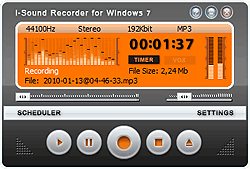MIDI
Sound cards of course play digitized audio, such as we have been discussing up to this point. However, sound cards also have another way that they can play music, using a special audio format called musical instrument digital interface, or MIDI (pronounced "mih'-dee"). MIDI was developed originally to allow synthesizers and digital instruments to be connected to computers, and in fact, many better synthesizers can be connected to your sound card to allow you to compose MIDI files using the synthesizer.
MIDI doesn't tell the sound card exactly what frequencies of sound to reproduce; rather, it tells the sound card to play notes as if the card were a musical instrument. You can think of MIDI music as a sheet of music, a page with musical notes on it, whereas digitized audio music is more comparable to a finished recording of that same music being played. Since there is no actual sound encoded in a MIDI file, they are much smaller in size than digitized audio files. It's left up to your computer to play the note with the "correct" instrument. Correct is in quotes, because this may not always be the case. Think of it this way: a friend writes a piece of music for the piano. He has a grand piano that he uses, and the music he wrote sounds really great on it. Later on, he gives you a photocopy of his sheet music which you take home to play on your baby grand piano (or harpsichord for that matter!) The notes are the same, but it sounds quite a bit different. Sound cards are like this too, but there are more reasons as to why they sound differently.
There are two different ways that MIDI files can be played by a sound card:
- FM (Frequency Modulation) Synthesis: With this technique, instrument sounds are created by oscillators, much the same way that a conventional keyboard synthesizer works. FM synthesis can produce sounds reminiscent of the "real thing", but the sound is noticeably artificial, much the way a synthesized piano, harp or saxophone sounds artificial.
- Wavetable Synthesis: This more advanced technique uses a ROM chip on the sound card that contains an actual recorded sample of the real instrument to be played. When the sound card needs to play different notes it modifies the frequency of the sample, producing a much more realistic sound. Most wavetable sound cards also come with wavetable RAM, so you can load instrument samples from disk, allowing you to specifically tailor the instrument to complement the piece you are writing/playing. The downfall to this is that anyone who tries to listen to your MIDI file must have their sound card loaded with the same instrument samples you had, for it to sound the way you had intended. Short of including them in a ZIP file along with your MIDI, they will only be able to approximate it.
There are also different MIDI standards; common ones include:
- Adlib
- Roland GS
- Roland MT32
- Microsoft Sound System
- EMU8000 -- 32 voices, wavetable
- GM -- General MIDI, FM
- MPU-401


